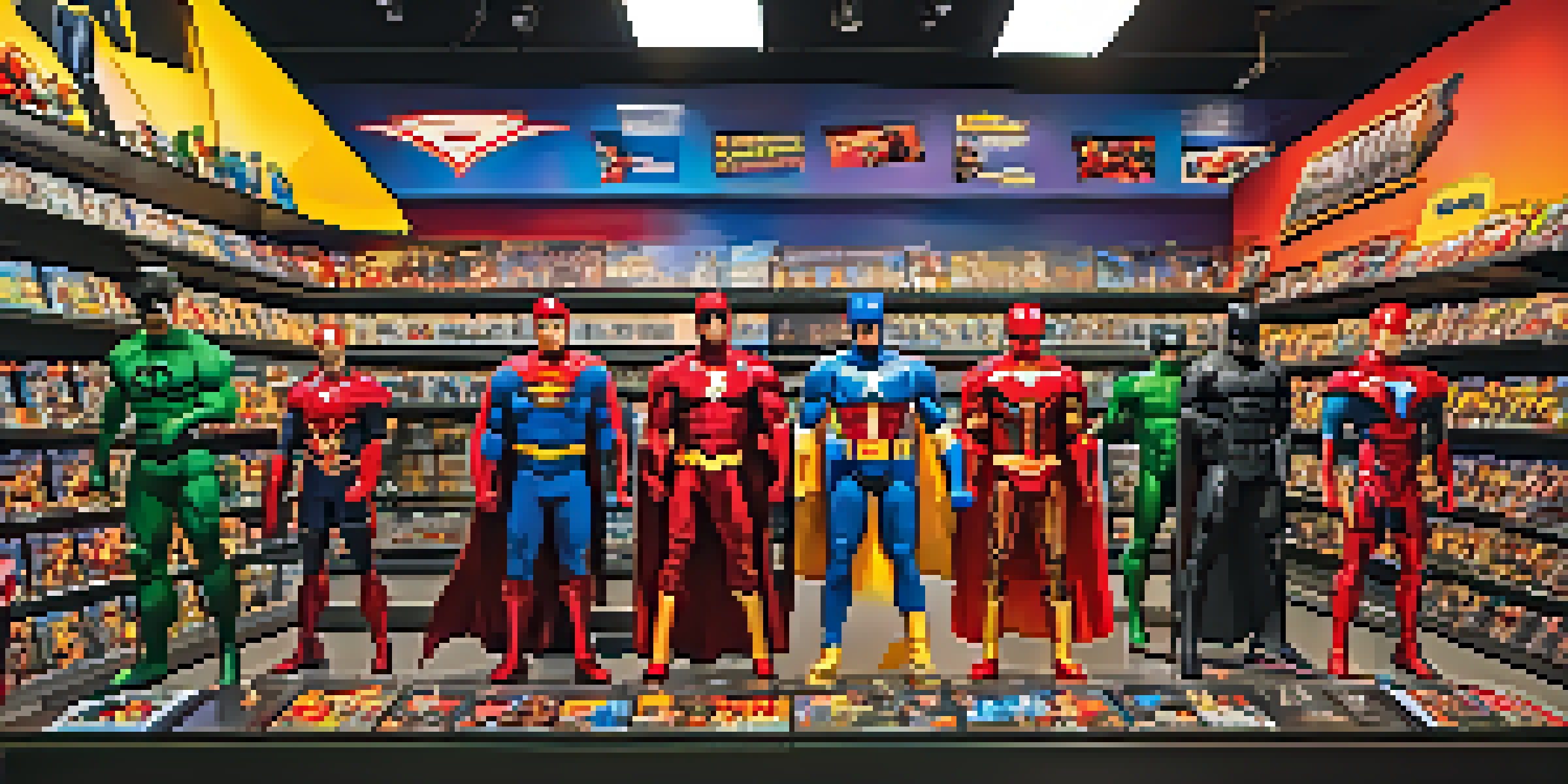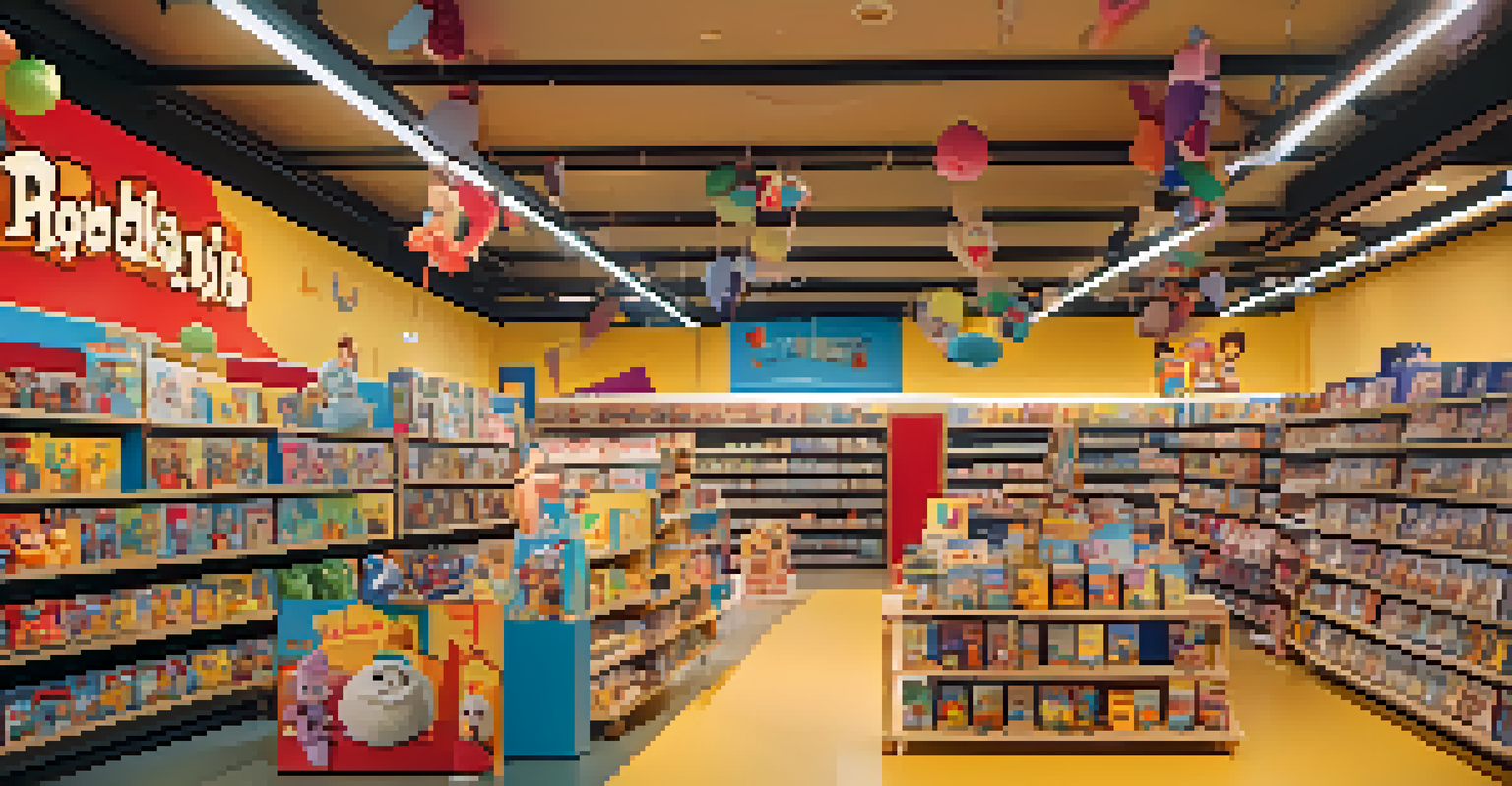The Connection Between Film Releases and Retail Sales Trends

Understanding the Influence of Film Releases on Shopping
Film releases can significantly influence retail sales, creating a unique synergy between the two industries. When a highly anticipated movie hits theaters, it often generates a buzz that can translate into increased foot traffic in stores, particularly those selling merchandise related to the film. For instance, the release of a blockbuster superhero movie typically sees a spike in sales for related action figures and apparel.
Movies can and do have tremendous influence in shaping young lives in the realm of entertainment towards the ideals and objectives of normal adulthood.
This trend can be observed with franchises like 'Star Wars' or 'Harry Potter,' where retail outlets prepare for the influx of customers by stocking up on themed products. Retailers often align their marketing campaigns with these film releases to maximize exposure and sales. Essentially, the excitement generated by a new film can lead to a significant boost in retail activity, creating a win-win situation for both sectors.
Moreover, the timing of film releases can be strategic, often coinciding with peak shopping seasons like holidays or back-to-school. This not only capitalizes on the film's popularity but also meets the increased consumer demand during these times. The connection between film and retail is a powerful example of how entertainment can drive economic activity.
How Movie Genres Affect Retail Sales Patterns
Different movie genres can lead to varying retail sales patterns, as they attract distinct audiences with unique shopping behaviors. For example, animated films aimed at families often result in a spike in sales for toys and children's apparel. In contrast, a horror film might lead to increased sales of themed merchandise like costumes and home decor for Halloween enthusiasts.

Retailers that specialize in particular genres can leverage these trends by curating their inventory ahead of time. A store that focuses on collectibles might see a surge in sales around the release of a highly anticipated sci-fi film. This genre-specific approach allows retailers to cater directly to the tastes and interests of their target demographic.
Film Releases Boost Retail Sales
The excitement generated by film releases significantly increases foot traffic and sales in related retail stores.
Additionally, the marketing strategies employed by studios can influence retail patterns. For instance, if a film is marketed heavily through social media, it may drive more online sales for related merchandise. Understanding the nuances of how different genres resonate with consumers can help retailers optimize their strategies to maximize sales during peak film release periods.
The Role of Merchandising in Film Releases
Merchandising plays a crucial role in the connection between film releases and retail sales. Studios often collaborate with retailers to create exclusive products that tie into their films, enhancing the viewing experience. For example, a fast-food chain might offer toys based on characters from an upcoming animated feature, creating a sense of excitement and urgency for both the film and the merchandise.
Merchandising is a great opportunity for companies to promote their brand and connect with their audience in a meaningful way.
These collaborations can significantly boost sales, as fans are often eager to collect memorabilia related to their favorite films. This is particularly effective for franchises with a dedicated fan base, where limited edition items can create a sense of exclusivity. The more unique the merchandise, the more likely consumers are to make a purchase to commemorate their film experience.
Moreover, merchandising strategies can extend beyond physical products. Digital merchandise, such as downloadable content or in-game items related to a film, can also drive sales. The synergy between film releases and merchandising reflects a broader trend of integrating entertainment with retail, ultimately enriching the consumer experience.
Seasonal Trends: Film Releases and Holiday Shopping
The timing of film releases often coincides with major shopping seasons, creating a symbiotic relationship that benefits both industries. For example, holiday-themed films released in December can boost sales of related merchandise, as consumers are already in a shopping mindset. Retailers can capitalize on this by creating themed displays and promotions that align with the film's release.
During the summer months, blockbuster films can drive significant retail traffic, especially in family-oriented stores. Parents looking for activities to entertain their children might purchase items related to the latest animated feature, further enhancing the connection between film and retail. This seasonal aspect highlights how strategically timed releases can lead to increased consumer spending.
Genres Shape Shopping Behavior
Different movie genres attract unique audiences, leading to distinct shopping patterns and merchandise sales.
Additionally, the rise of digital shopping has transformed how film releases impact retail sales. Online retailers can quickly adapt their marketing strategies to align with film launches, reaching consumers who may prefer shopping from home. This flexibility allows for a broader range of products to be offered, maximizing sales opportunities during peak film release periods.
The Impact of Streaming Services on Retail Sales
The rise of streaming services has changed the landscape of film releases and their impact on retail sales. With more consumers choosing to watch films at home, traditional retail sales for movie-related merchandise may face challenges. However, this shift has also opened up new opportunities for online retailers to reach customers directly through targeted marketing and promotions.
Streaming platforms often promote their original films with exclusive merchandise available only through specific retailers, creating a sense of urgency among fans. For example, a hit series might collaborate with an online store to offer limited-edition collectibles, driving traffic and sales in a way that traditional releases might not. This strategy helps maintain a connection between films and retail, even in the digital age.
Furthermore, the convenience of online shopping allows consumers to purchase merchandise associated with a film without needing to visit physical stores. This shift emphasizes the importance of e-commerce strategies that align with film releases to capture consumer interest and drive sales. As streaming continues to evolve, so too will its effects on retail trends.
Consumer Behavior: The Psychology Behind Film and Retail
Understanding consumer behavior is key to deciphering the connection between film releases and retail sales. The anticipation surrounding a film can lead to heightened emotions, prompting consumers to indulge in related merchandise as a way to express their enthusiasm. This phenomenon is often seen during the lead-up to a blockbuster release, where fans eagerly seek out products that allow them to connect with the film.
Psychologically, the act of purchasing merchandise related to a favorite film can enhance the overall experience, creating lasting memories. For instance, buying a T-shirt or collectible can serve as a tangible reminder of the excitement of the movie, further solidifying the bond between the consumer and the film. This emotional investment can drive sales, as consumers are more likely to purchase items that evoke positive feelings.
Streaming Changes Retail Dynamics
The rise of streaming services has shifted how consumers purchase film-related merchandise, creating new opportunities for online retailers.
Additionally, retailers can tap into this psychology by creating marketing campaigns that resonate with fans. By highlighting the connection between the film and the merchandise, retailers can encourage consumers to view their purchases as an extension of their film experience. This understanding of consumer behavior can lead to more effective marketing strategies and ultimately boost retail sales during film release periods.
Future Trends: The Evolving Relationship Between Film and Retail
As the film and retail industries continue to evolve, new trends are emerging that could reshape their connection. The integration of technology, such as augmented reality and virtual reality, is beginning to play a role in how consumers interact with film-related merchandise. Imagine trying on clothes associated with a character through an app before making a purchase—this could enhance the shopping experience significantly.
Moreover, the focus on sustainability is influencing both industries, as consumers increasingly seek eco-friendly products. Retailers that align their merchandise with the values of sustainability can attract a more conscious consumer base. This trend could lead to collaborations between films and retailers that prioritize environmentally friendly merchandise, creating a new avenue for sales.

Finally, the ongoing competition among streaming platforms could prompt studios to develop more innovative marketing strategies that intertwine with retail sales. Exclusive releases, partnerships with retailers, and unique merchandise offerings could become commonplace as both sectors look to maximize their profitability. The future is bright for the connection between film releases and retail sales, as both industries adapt to changing consumer preferences and technological advancements.